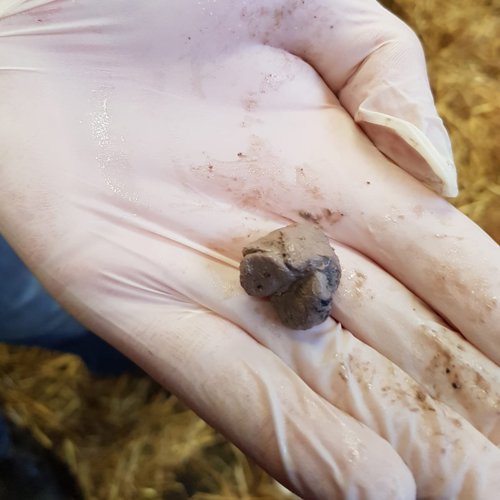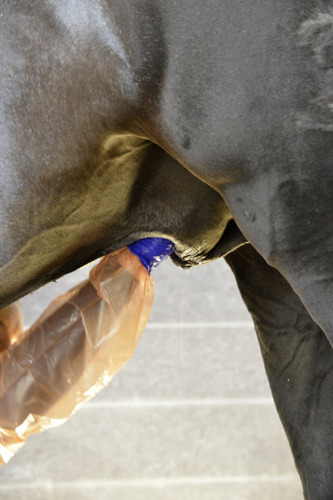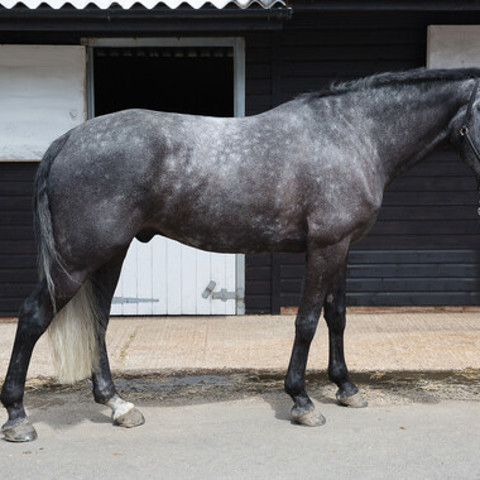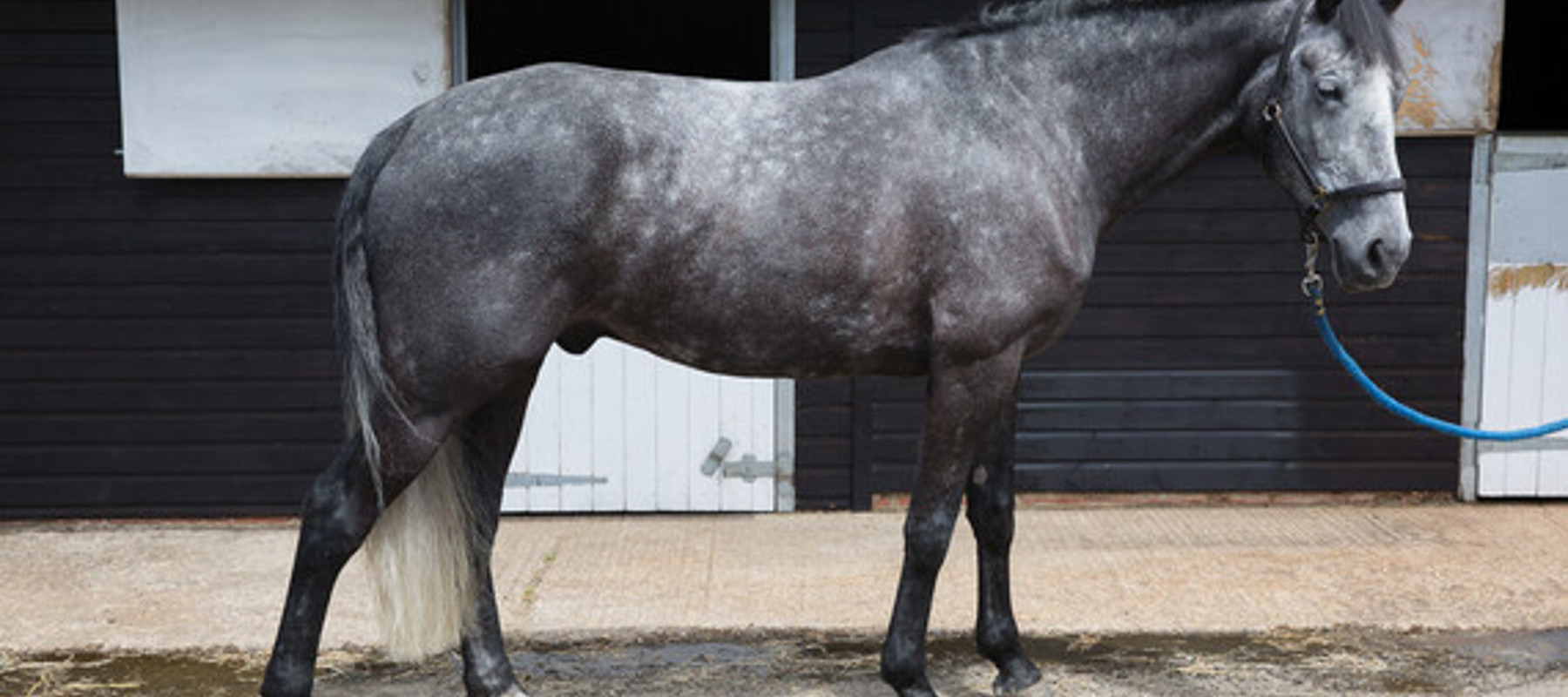The sheath on a male horse is a double fold of skin that protects the penis when it’s not extended for urination or breeding. Smegma is a wax-like substance inside the sheath that helps maintain healthy skin and lubricate the penis - horses vary significantly as to how much smegma they produce1.
Why check?
A sheath examination allows you to check the penis and surrounding tissues for any growths and remove any ‘bean’ present. The ‘bean’ is the common name for a collection of excess smegma within the urethral fossa, which is at the tip of the horse’s penis next to the hole from which he urinates2. If this bean isn’t removed it can grow and begin to obstruct the urethra, which can cause urine to spray out over the hind legs, attracting flies. A build-up of smegma within the sheath can also attract flies to the area in summer months. Fly strike can occur- this is where flies lay their eggs within the sheath, which then hatch out into maggots can cause your horse immense irritation and horses often show colic signs as a result.

Image of a bean which was successfully removed.
Photo Credit: Agnew Equine Vets
How often should I clean?
A thoughtful approach is necessary, as too-frequent cleaning may cause more harm than good in disturbing the natural balance of healthy bacteria in the sheath3. Avoid using antiseptic solutions such as Hibiscrub as this will kill off the good bacteria and dry out the surface of the skin1. It will depend on how much smegma your individual gelding produces - for some horses a yearly clean is enough, although checking the area more frequently for growths or early signs of disease is important.

Photo Credit: Duncan Lamont
What to look out for
Several tumours, including squamous cell carcinomas and melanomas, can affect the penis and surrounding skin. Sometimes the first sign of these problems are changes in skin colouration or texture. Unusual swelling of the sheath, which doesn’t go down when exercised, can be a sign of infection and advice from a vet should be sought2.
Should you sedate your horse?
This is a dangerous area in which to work, as your head is near the horse’s hind limbs, so if there’s any doubt in how they may react, it’s safer to sedate. We recommend combining with a horse’s routine annual dental check, vaccination or where applicable, clipping. Some geldings frequently drop their penis and are clearly not bothered by it being handled. Other geldings can be shy, but generally the more relaxed and comfortable he is, the better. However, you need to be patient, and it's very important not to force the penis out of the sheath.
How to clean:
- Wear gloves and use plain warm water and cotton wool.
- Think safety. Sedation can aid this, but remember horses can still kick under sedation, so wear your hat and stand close to the horse’s side throughout.
- Use a water-based lubricant to gently remove any large loose or flaky material. If there are any stubborn pieces of smegma remaining, KY Jelly can be helpful to loosen them.
- Inspect the tip of the penis and urethral fossa for any beans. A finger (well-lubricated) may need to be gently worked into the beginning of the fossa to facilitate this removal. The bean can be removed by squeezing the shaft of the penis just above where it sits.
- Dry and apply a water-based gentle lubricant to the sheath.
Who can do the job?
Owners or care providers can complete the sheath cleaning themselves and monitor the area. However, it’s now common for yards to use a freelance sheath cleaner. This can be useful for owners who perhaps cannot complete the clean themselves. However, make sure that you do your research, and that you’re using a reputable person for the task. There are no formal qualifications needed to provide this service and no regulated body overseeing this, so make sure the individual is as experienced and knowledgeable as possible so that concerns and potential issues aren’t missed. Also check that the individual holds public liability insurance as a minimum, this means they and you will be protected should something go wrong.
We’d advise that your vet carry out the clean as they will also check the area thoroughly for abnormalities. This can be tied into other routine visits and is especially important if the horse needs sedating.
What about mares?
Although mares don’t produce smegma, they can still get a build of sweat, dirt and dead cells around their teats. This can be equally irritating and uncomfortable and should be monitored regularly. The same caution should be taken as with geldings - some mares may not tolerate the procedure and can be very sensitive. Safety should always be the number one priority.
Written in conjunction with Agnew Equine Vets

References
chevron-down
chevron-up
- Carson, D. & Ricketts, S. (2022) Sheath Cleaning in Horses.
- (2019) Sheath Care for Geldings.
- Ridings Equine Vets. (2018) Sheath Care.
Get in touch – we’re here to help
The BHS Horse Care and Welfare Team are available to offer you advice and support with any questions or concerns you may have.
Don’t hesitate to call us on 02476 840517* or email welfare@bhs.org.uk – You can also get in touch with us via our social media channels.
Opening times are 8:35am-5pm from Monday – Thursday and 8:35am-3pm on Friday.
*Calls may be recorded for monitoring purposes.


